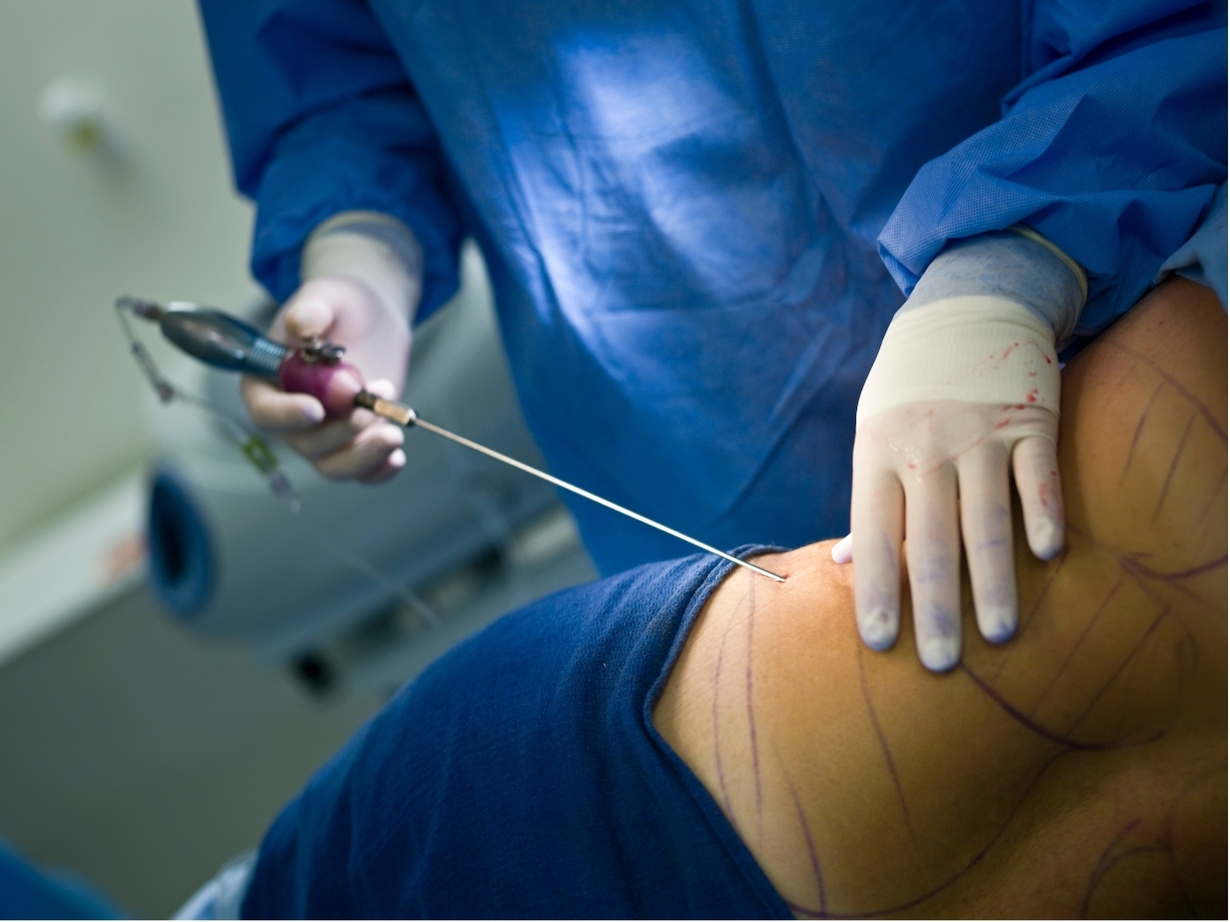IS LIPOSUCTION SURGERY RIGHT FOR YOU?
You’ve likely seen the almost “miraculous” results of liposuction showcased in magazines or online. Liposuction can indeed sculpt your body by eliminating pockets of localized fat, but it requires the proper care to achieve the best results.
Many of my patients choose to combine liposuction with other plastic surgery procedures to enhance their body contour and make the results even more striking. This decision, however, should always be carefully considered.
Below, you’ll learn about the technical precautions necessary for performing this procedure safely. I’ve also included valuable tips to help you make the most of what liposuction can offer.
DOES LIPOSUCTION LEAVE NOTICEABLE SCARS?
The scars from liposuction are minimal, usually between 5 and 8 millimeters in size, and are carefully placed to be as inconspicuous as possible.
Additionally, a good postoperative care plan significantly aids the healing process.
Pro tip: Look for a surgeon who collaborates with a specialized post-surgical aesthetic clinic. Poorly executed lymphatic drainage can ruin the results of your liposuction, so be sure to prioritize this aspect of recovery.
I’VE HEARD ABOUT RISKS—DO THEY EXIST?
Let me be honest: every medical procedure carries risks. However, since liposuction is one of the most performed surgeries in Brazil, it tends to receive a lot of media attention.
According to the International Society of Aesthetic Plastic Surgery (ISAPS), liposuction ranked as the most performed procedure in 2013, with over 228,000 surgeries conducted, followed closely by breast implant procedures.
That said, there are important steps to maximize the safety of this procedure, which I consider essential for you to know.
HOW TO MAKE LIPOSUCTION SAFER
The first safety measure is accurately calculating the total volume of fat to be removed. The Brazilian Society of Plastic Surgery recommends that the extracted fat should not exceed 5% to 7% of the patient’s body weight.
Additionally, the surgery must be conducted carefully, without rushing or distractions, as it involves the use of a cannula to aspirate fat. The hand controlling the cannula must remain steady, with the tip always pointing upward.
The left hand should track the cannula tip’s position at all times to ensure absolute control. This method significantly enhances the safety of the procedure.
For these reasons, if you’re considering liposuction, look for a surgeon who is experienced, meticulous, and detail-oriented. During your consultation, seek a doctor who inspires confidence and trust.
WHAT TYPES OF LIPOSUCTION ARE AVAILABLE?
Liposuction has been performed since 1984, and since then, several tools have been developed to make fat removal easier.
In my practice, I frequently offer three types of liposuction:
- Traditional Liposuction (always performed with saline infiltration beforehand)
- Laser-Assisted Liposuction
- Vibro-Liposuction
Other types include ultrasound-assisted liposuction (VASER), water jet liposuction (BodyJet), and Hydrolipo.
Pro tip: I do not recommend undergoing liposuction in a clinic office—it’s a cost-cutting measure that isn’t worth the added risk. Avoid surgeons who suggest this approach.
WHICH LIPOSUCTION METHOD IS BEST FOR ME?
I typically recommend standard liposuction for patients with small amounts of fat or those who will be discharged on the same day.
For larger fat volumes or procedures involving both the front and back, I frequently use Vibro-Liposuction. This technique effectively removes large amounts of fat and helps combat skin laxity.
For patients with significant skin laxity or cellulite, I prefer Laser Liposuction, as my experience has shown superior results in these cases.
Pro tip: During your initial consultation, ask your surgeon to show before-and-after photos of liposuction performed using different techniques.
WHAT IS LIPOSCULPTURE?
Liposculpture is a term commonly used to describe fat grafting applied to the gluteal region. The goal is to enhance the size and projection of the buttocks.
It’s also possible to improve the appearance of deep cellulite in some cases. Using the patient’s own fat as the grafting material has the advantage of avoiding implants, though modern implants can also produce very natural results.
WHAT POSTOPERATIVE CARE IS NEEDED?
After removing significant amounts of fat, it’s normal for the skin to appear somewhat loose or lax. Vibro-Liposuction and Laser Liposuction can help address this issue.
It’s essential to wear a postoperative compression garment for 30 days to help shape the skin.
Lymphatic drainage is also mandatory to reduce swelling, minimize bruising, and enhance body contouring results.
Dr. Alexandre Charão sees patients in Rio de Janeiro and Petrópolis. For more information, feel free to get in touch.



